The Denali National Park and Preserve Kennels has a long and storied history that is intricately connected to the history of the Park itself.
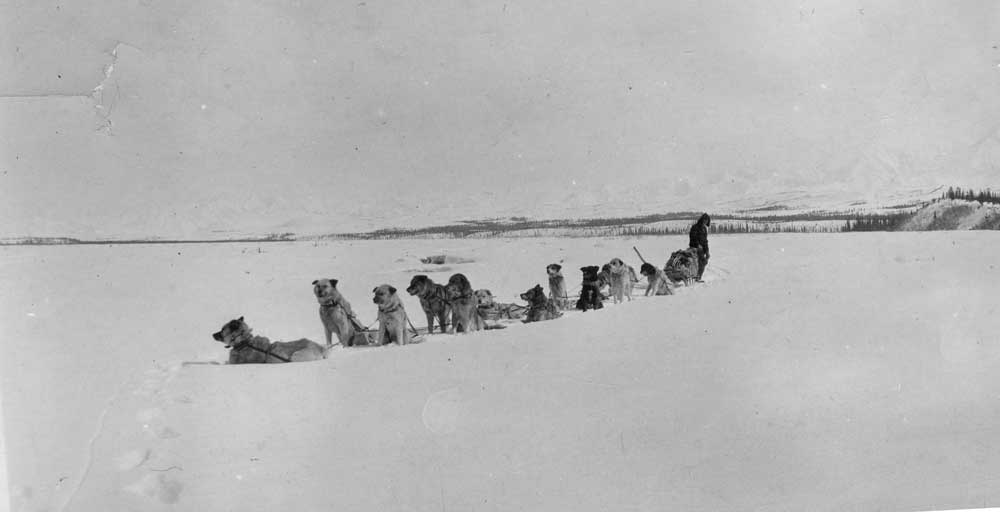
NPS Photo / Grant Pearson
In today’s modern and fast-paced world, our dogs have an increasingly important role to play. In some ways, they are the ever-beating heart of the park. Generations of Denali dogs from our historic bloodline have meandered their way through the park, up and down rivers, over passes and through canyons, connecting us to the land and offering their service so that we can learn about and protect Denali and her great spirit.
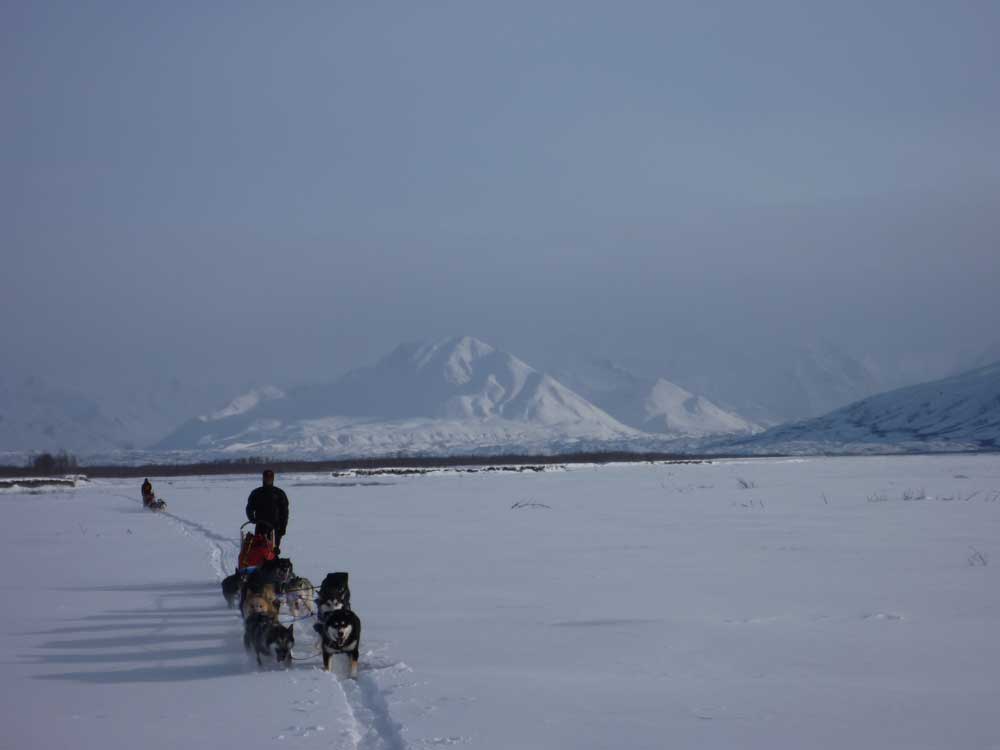
NPS Photo
To bring a new generation of dogs into the Denali Kennels is a great responsibility. The arduous conditions that we move through and field operations that we seek to accomplish in order to preserve Wilderness integrity is not for the faint of heart. It takes drive, commitment, and extremely specific mental and physical attributes to stay healthy, successful, and adaptable here. We strive to maintain a dog yard of about 30-35 working dogs, bred very specifically to endure tough conditions, which allows rangers and volunteers to have up to 3-5 dogteams working throughout the park in winter.
Each year, the oldest dogs in the kennel, typically age 9, will be retired to loving and active families that live in cool climates.
To maintain our ideal dog-power numbers and replace the dogs that we’ve retired, a litter is born each spring/summer. We often receive questions about how we choose which dogs to breed and concern about why we don’t use dogs in shelters. We’d like to take a moment to answer some of our common visitor questions concerning why we choose to breed a litter of pups, and what about that choice impacts our kennel and the greater mushing community.
Question: “Why won’t the Denali Park Kennels adopt shelter dogs instead?”
The dogs in the Denali Park Kennels are a very specific type of dog. They are freight hauling Alaskan Huskies. This means that they are large bodied, typically between 60-90 pounds, which is an ideal sized working animal for breaking trail in deep, thick snow, and pulling heavy loads for long hours. It is hard to find these large, freight style dogs in kennels in Alaska and even more rare to find them in shelters. It would be cruel to use another breed of dog or even a racing Alaskan husky that does not have the physical traits to comfortably do the work of a Denali NPS sled dog on the trail and to comfortably camp out in our cold, snowy winter conditions.
They have big, compact feet to walk on snow and prevent painful ice balls from building up between their pads (as would happen to a web toed Labrador Retriever). They have dense, warm fur and a long fluffy tail to keep them warm, outside all winter, during -40F (-40C). Their coats are double layered, with the underfur being soft and downy. This insulating layer is covered by guard hairs that protect the dogs from moisture and deflect wind. The long fluffy tail is important to wrap up to their noses as they curl up in a ball. It filters the cold air and warms it as it goes into their lungs while protecting their fur-less noses from getting frostbite.
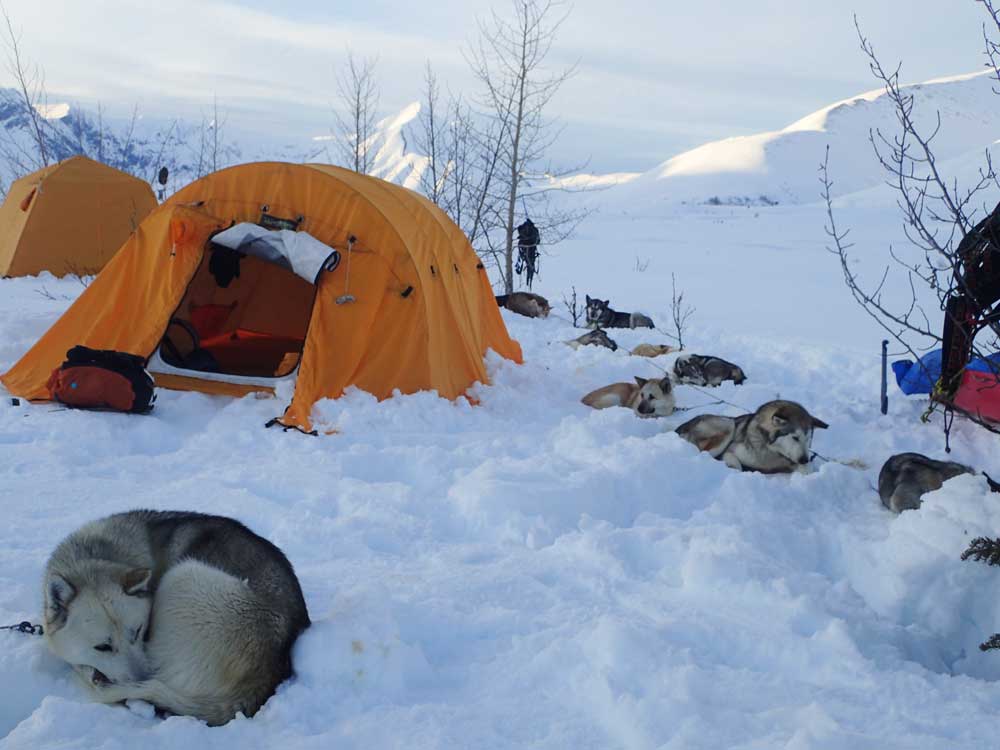 NPS Photo
NPS Photo
Denali dogs also need to be highly socialized with both humans and other dogs. In summer, they accept attention during sled dog demonstrations with around 60,000 visitors. In winter, they need to interact with the hardy fans who come to meet them in the “off “season, but they also need to be able to run thousands of miles breaking trail in the park.
So, we need multi-talented dogs who are both friendly and focused, gentle and tough, strong and smart to take on the variety of challenges associated with their job year round. We socialize them from a very young age (just weeks old), ensuring that they are friendly and loving to the multitude of summer visitors. We also train them as puppies to be leaders who are focused on listening to the mushers, friendly to other dogs, and once they are yearlings, good pullers.
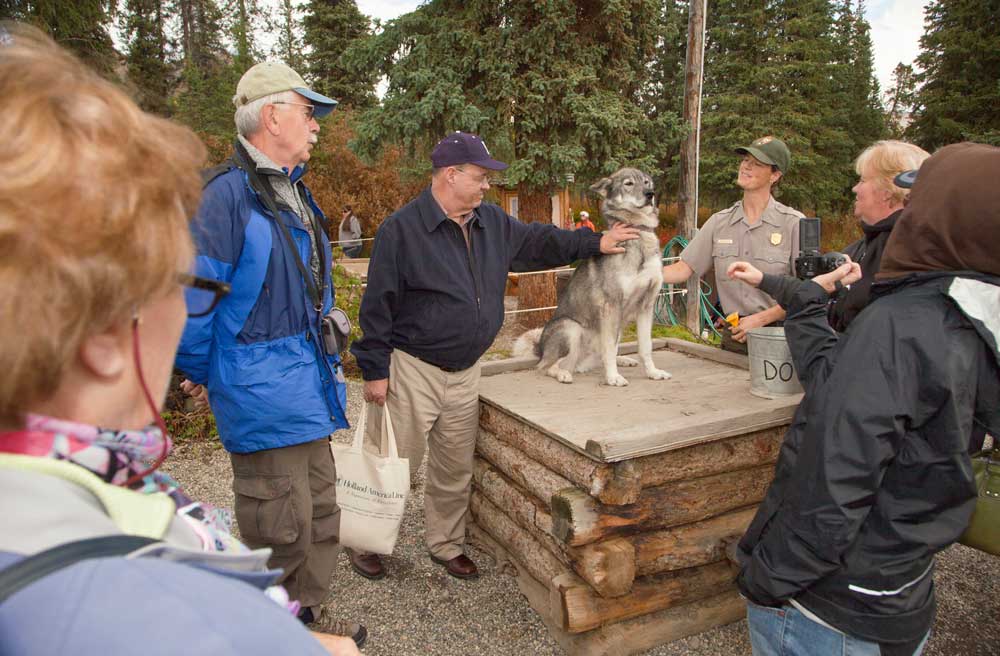
NPS Photo / Colleen Miniuk Sperry
The Denali National Park and Preserve Kennels has a bloodline running through most of our dogs that is near historic and dates back to the early 70’s. Susie, the foundation female of our bloodline, was a Greenland Eskimo dog, born in 1972 on an ice floe off of Fletcher’s Ice, North of Barrow. She was brought to Denali as a young pup, and for the first time since the 30’s and 40’s, Denali’s dogs were back at work, preserving and protecting the land rather than just providing entertainment for summer visitors. Susie's hard working traits and spirit live on in our bloodlines, with each new generation of puppies that we breed here offering new glimpses into our history and providing the traits that we need to maintain in order to accomplish our work successfully.
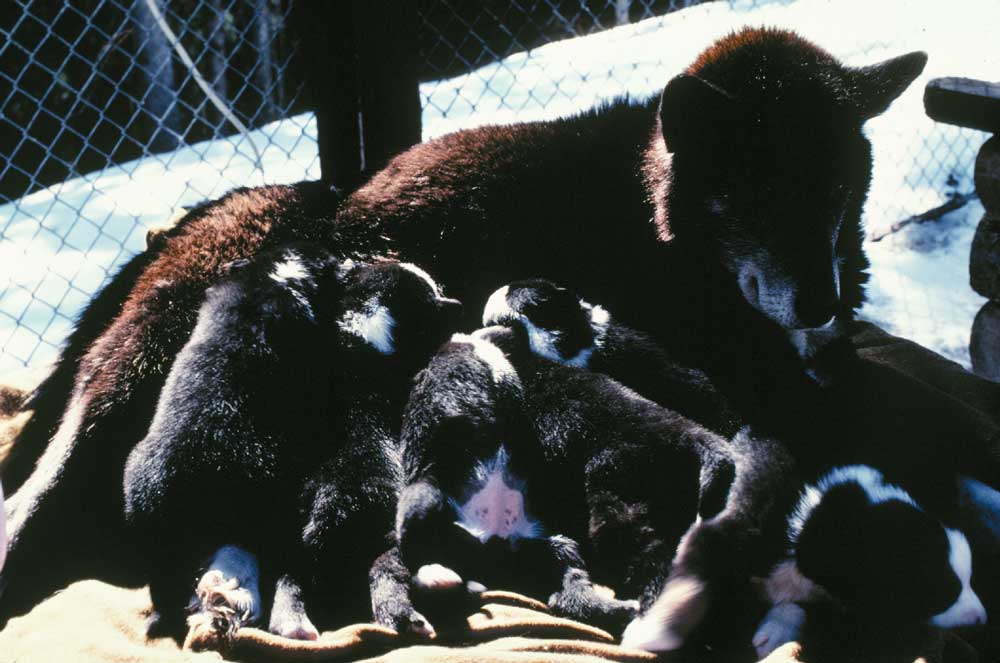 NPS Photo
NPS Photo
Question: “Why not adopt retired racing dogs?”
Alaska has more dog mushers and sled dogs than any other state in the US. And yet, there are surprisingly few dogs, even in Alaska, that possess the necessary physical traits to do the work of the NPS sled dogs. Since the proliferation of snowmachines in the 1970’s, dog teams have become increasingly rare as a choice of travel and transportation in Alaska. Most mushers who have dogs are training them for races or for recreational purposes. Because they are running predominantly on hard packed trails made by snowmachines, these race dogs can be much smaller, lighter, and faster. They are “sports cars”, hound-like with graceful frames and light bodies (40-45 pounds), versus the big “MACK truck” dogs we need here. Our dogs tend to be much fluffier to withstand cold temperatures and wind during our cold camping nights and unexpected delays on the trail. The unpredictable conditions we experience, such as avalanches overflowing into our trails, finding ice bridges, and various conditions at research installation sites, often require us to secure our teams for sometimes hours at a time while the human rangers work to shovel out routes, find alternative ice bridges to cross, or set up equipment. The dogs’ fluffy coats protect them as they rest, whereas racing dogs move at such a quick and consistent pace that they would run the risk of overheating with so much insulation.
Question: “Do you ever adopt dogs, or breed with other kennels dogs?”
There are actually 6-10 other freight hauling kennels in Alaska that we exchange bloodlines with. Prior to choosing which dogs to breed here at the Park Kennels, our Kennel Manager will speak with them and ask about their kennel use and operations. We have adopted puppies, given puppies to, or chosen to breed dogs from Eagle, Fairbanks, Eureka, Kotzebue, and Lake Minchumina, as a few examples. Adopting in other freight hauling Alaskan Huskies as puppies allows us to maintain genetic diversity as well as work with and train dogs from a young age to meet our kennel’s needs. Choosing to breed with another kennel is a smart way to steer away from inbreeding to keep our bloodlines in the Park Kennel strong and healthy.
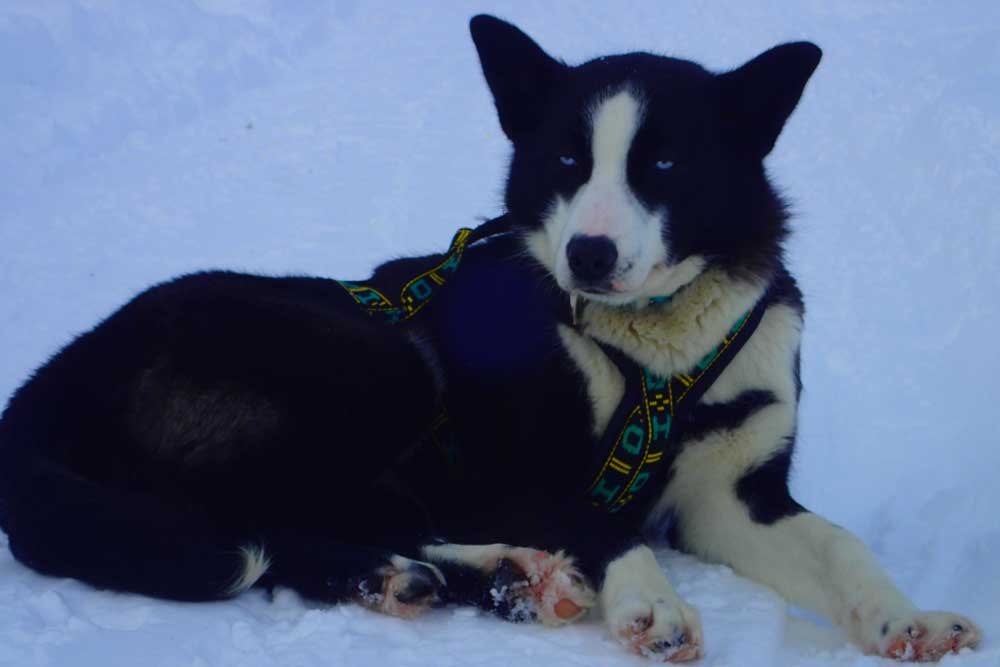 NPS Photo
NPS Photo
Question: “How many puppies are born in a typical litter? How many litters per year do you have? and When are the pups born?”
We only breed one litter per year to replace our dogs that are turning 9 years old and being adopted out to families in cold northern places for retirement. There is no average number of pups born in a litter. There can be as few as one and as many as thirteen or more born in a litter. Female dogs have 10 teats so nature probably plans for litters as big as 10 and for any more than that to survive it takes an exceptionally dedicated female to make sure all the pups are getting enough nourishment. Typically we are hoping to have at least 4-5 pups born to replace our retirees for that year.
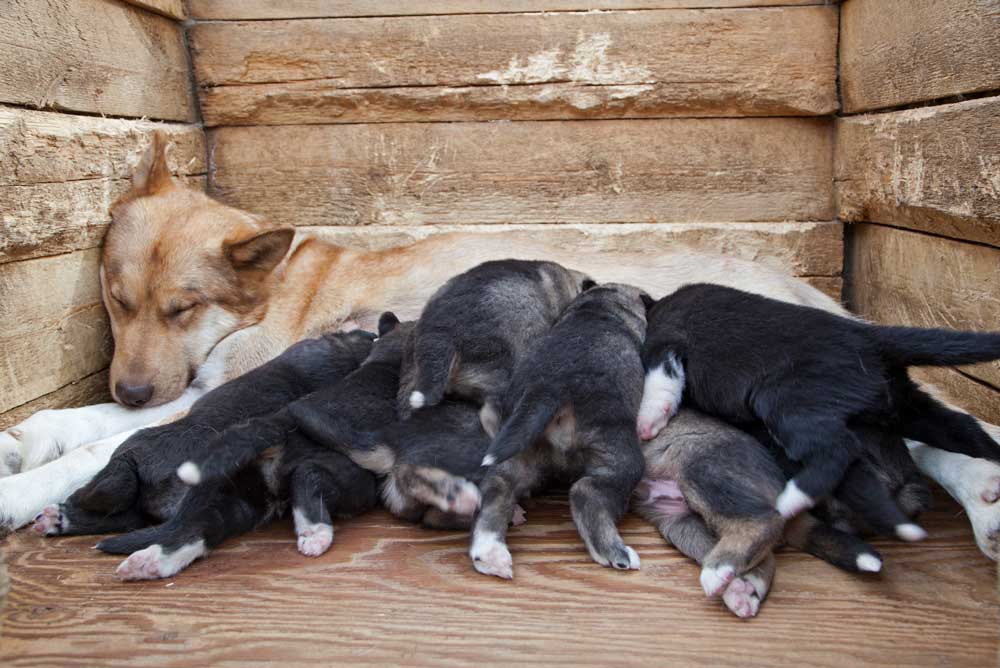
NPS Photo / Colleen Miniuk Sperry
 NPS Photo
NPS PhotoOnce a female is bred gestation lasts 60-65 days until a litter is whelped. We may choose to do ultrasound or x rays toward the end of that time to determine if the breeding worked and approximately how many pups may be in it. It can be very hard to get an accurate count if it is a large litter. We don’t announce the total number of pups in the litter until they all make it through the challenging first few days of life.
To learn more about the early raising and training of our pups you can watch the short video series, "The Puppy Paws."
Question: “How do you decide who to breed?”
The kennels manager and kennels rangers are watching the dog’s performance in all aspects of their jobs 365 days a year. We tend to breed our dogs that have the best structure and conformation to be “durable dogs” for the work that we ask them to perform. We also like to breed our best lead dogs who show the mental capacity to handle the challenges of the trail in winter. Finally, we always want to breed dogs who get along well with people and with other dogs. We also have extensive genealogies and keep careful track of bloodlines to determine when we can combine within our kennels and when we need to bring in an outcross of new genetics from another kennel.
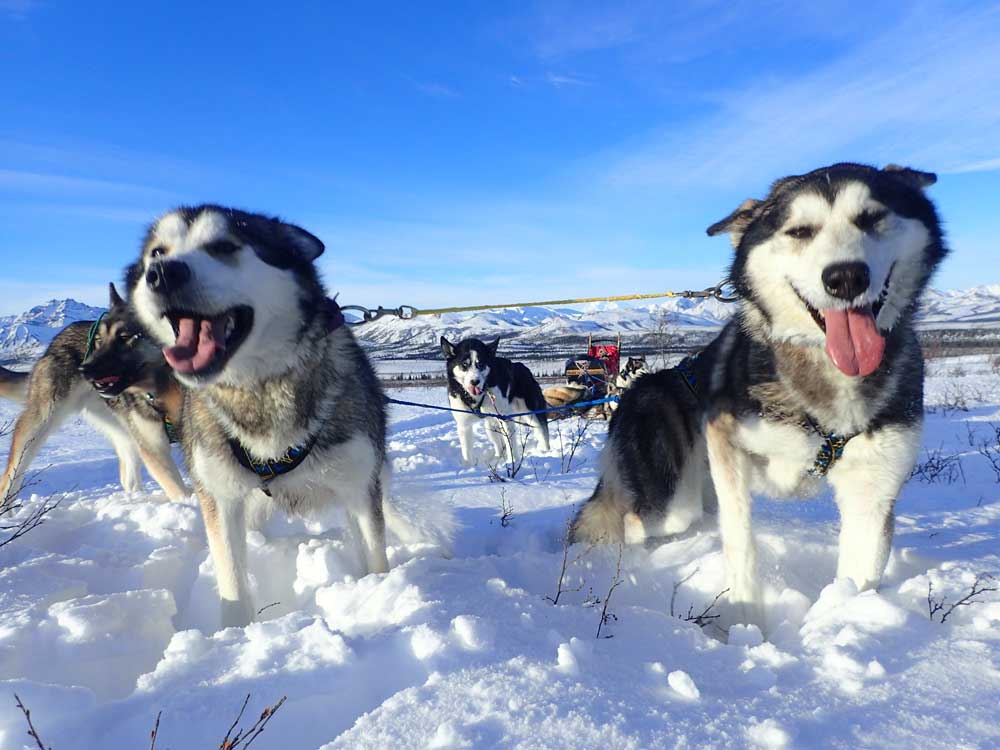
Question: “Can I adopt a puppy from a Denali NPS litter?”
In general, you can’t. We are not breeding pups to be pets. We do not buy or sell any dogs or puppies, nor do we pay or charge any stud fees. The purpose of our breeding program is to strengthen the bloodlines of freight hauling type Alaskan Huskies and to preserve this historic and hard to find type of working dog.
If we have more pups than we need in a litter, we will typically give those pups to other working mushing kennels that we share bloodlines with. The pups will grow up to be hard working dogs with their teams and we can get lots of information on how they perform throughout their careers which helps us make future breeding decisions. We almost never adopt pups out as pets to families.
Occasionally, we will retire a dog younger than 9 years old due to health reasons or a lack of the physical or mental traits to be able to happily perform their work here in the kennels. If you think you can provide a good active home for a retiring dog you can find and complete an application.
Question: “How many puppies of a Denali Kennels litter won’t “pass the test” to be a working Denali NPS sled dog?
Many people are aware of the high percentage of pups that just don’t “make the cut” in other working dog fields. It is a special pup that grows up to be a working service dog, K9 unit, bomb or drug sniffing dog, etc. It takes a lot of training and a special eagerness to master the task at hand with focus and determination. However, sled dogs have been bred and raised for thousands of years to have a strong desire to run and pull a sled. We simply need to nurture their instincts and provide them the opportunity to do what they were born wanting to do. We have very few pups that don’t go on to be an excellent member of our dog team or another kennel’s team.
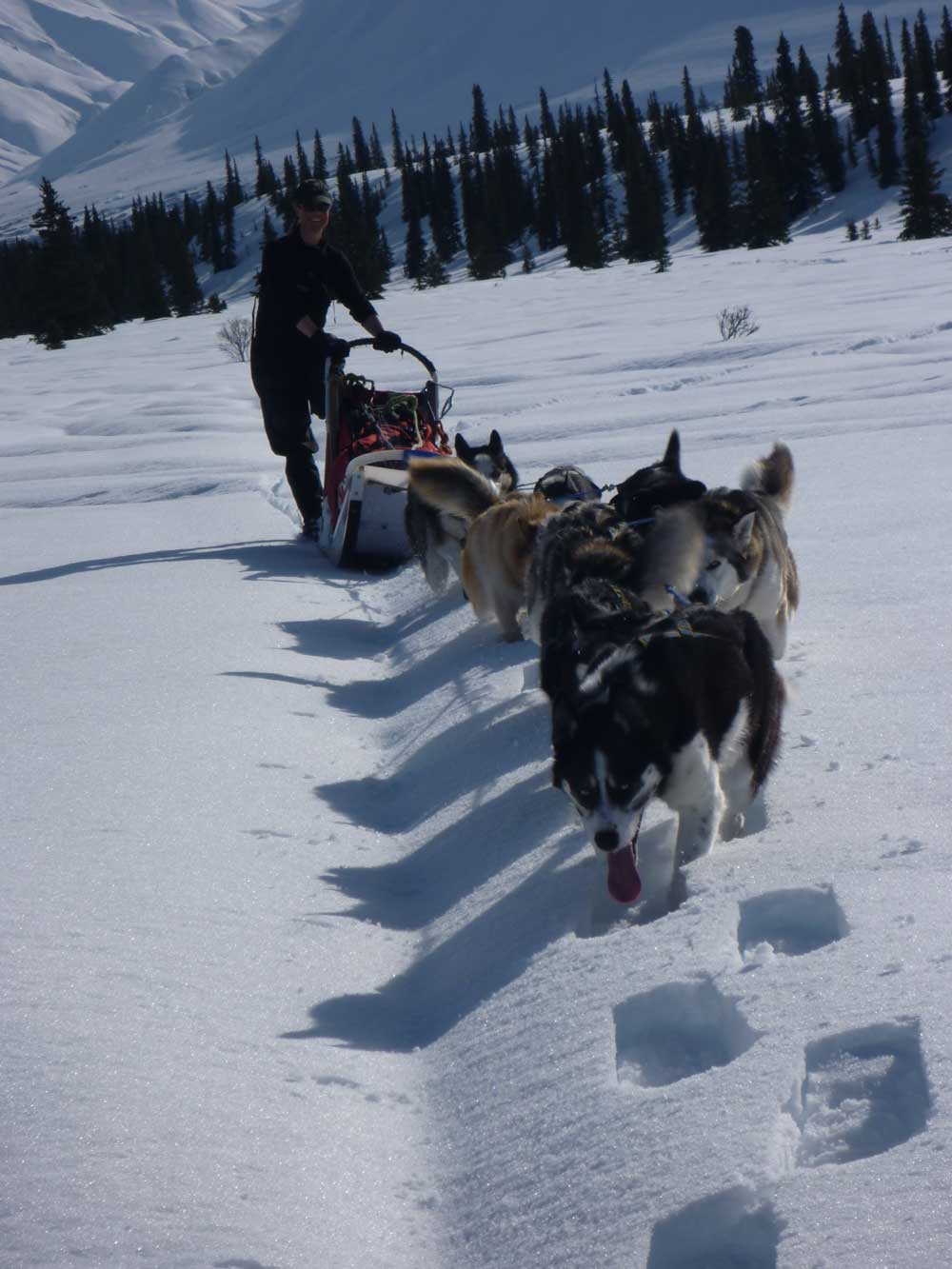 NPS Photo
NPS Photo
It is very rare that a puppy just isn’t mentally cut out to be a sled dog, but if one is not suited to join a working dog team they will be adopted to a loving, active pet home. More often, a pup may not be born with thick enough fur to be adequately protected from the cold and snow or their structure and conformation may not be ideal for the work that we do so they may struggle to keep up with their teammates. We want our dogs to LOVE their jobs and if any of them show signs of not loving it we will look for an early retirement home for them where they can live their best life with an active family that is still going to get the dog out skijoring, skiing, biking, hiking and adventuring for many years to come.
